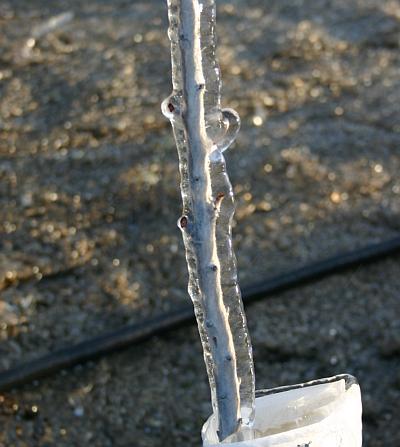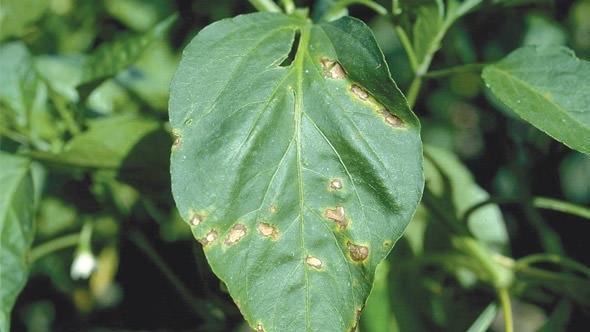How Freezing Temperatures Affect Bearing And New Nut Trees
Growers implement measures during the early spring to protect against frost injury and its potential to reduce yields. There are also key points before and after the critical bloom period when exposure to freezing temperatures are relevant, even starting as early as the handling of newly planted trees.
Bare-rooted trees are amazingly resilient after they are dug, and can withstand extensive handling and manipulation without suffering horticulturally. One vulnerability, though, is the risk of desiccation and freezing, particularly with some of the hybrid rootstocks. Trees that are not “healed-in” or binned in moist sawdust should not be allowed to dry out and be exposed to freezing temperatures. This can potentially injure or kill roots.
Cold-Storage Trees
This should also be a consideration if trees are destined for cold storage. Keep in mind that most growers do not prefer cold storage since it is usually the option when inclement weather or delays in ground preparation push back the targeted planting date.
Depending on the length of time trees are held in storage, and the humidity management of the facility, trees may dry out and need to be watered. Dry sawdust does not conduct water well and if it is too dry before the bins are re-watered, the bottoms of the bins where the roots are may not receive adequate water. This is especially important in the event the temperature of the storage facility may deviate and result in freezing.
I have seen bins of trees where the sawdust was frozen solid.

A young tree covered in ice. Following hard freezes and rainfall, bacterial canker can be a problem in a young orchard. (Photo credit: Wes Asai)
What To Watch For In Newly Planted Trees
After trees are newly planted, are they susceptible to frost injury? While I cannot say that I have ever documented actual trees in California dying after planting as a direct result of freezing, there are many cultural reasons one would want to avoid this potential.
It is well known that bearing trees are more susceptible to frost injury when the root zone is dry. Even sensitive ornamental plants, cactus, avocado and citrus trees are able to tolerate freezes better with a well-hydrated root system. If the soil moisture is low at planting time, trees should be tanked to both increase root moisture and seal air gaps in the root zone.
Potted tree plantings needs to be watched more closely since the interface between the potted root square and the soil does not conduct water as readily until the new roots become established.
Freeze injury may also be of concern to young orchards for a variety of other reasons. Following hard freezes and rainfall, bacterial canker (Pseudomonas syringae) can be a problem. In older orchards subject to the same conditions, bud bacterial blast from this same organism can result in crop losses. Some growers in very sandy ground run frost protection measures during the late dormant period, ahead of bloom for this very reason.

An up-close view of icicles on a branch. (Photo credit: Wes Asai)
Ice Can Be Good
Sprinklers offer one of the best protections against frost damage. As bad as it may look, ice formation on trees can actually be good. When icicles form on trees when sprinklers are being run, they are actually generating the most amount of heat. As long as new wet ice is constantly forming, the plant material will remain near 32 degrees and actually is prevented from getting colder by the latent heat created by the conversion of liquid water into solid ice.
Newly planted trees completely covered with ice, or bearing trees whose bottoms are covered with icicles can survive unscathed if the root zone is previously hydrated, and the sprinklers are not turned off until the ambient temperature rises above the point where the ice is melting on its own. Obviously, under the severe conditions of a hard freeze (several degrees or hours below the critical damage temperature) no type of protective measures, be it sprinklers, wind machines or orchard heaters will prevent damage.










